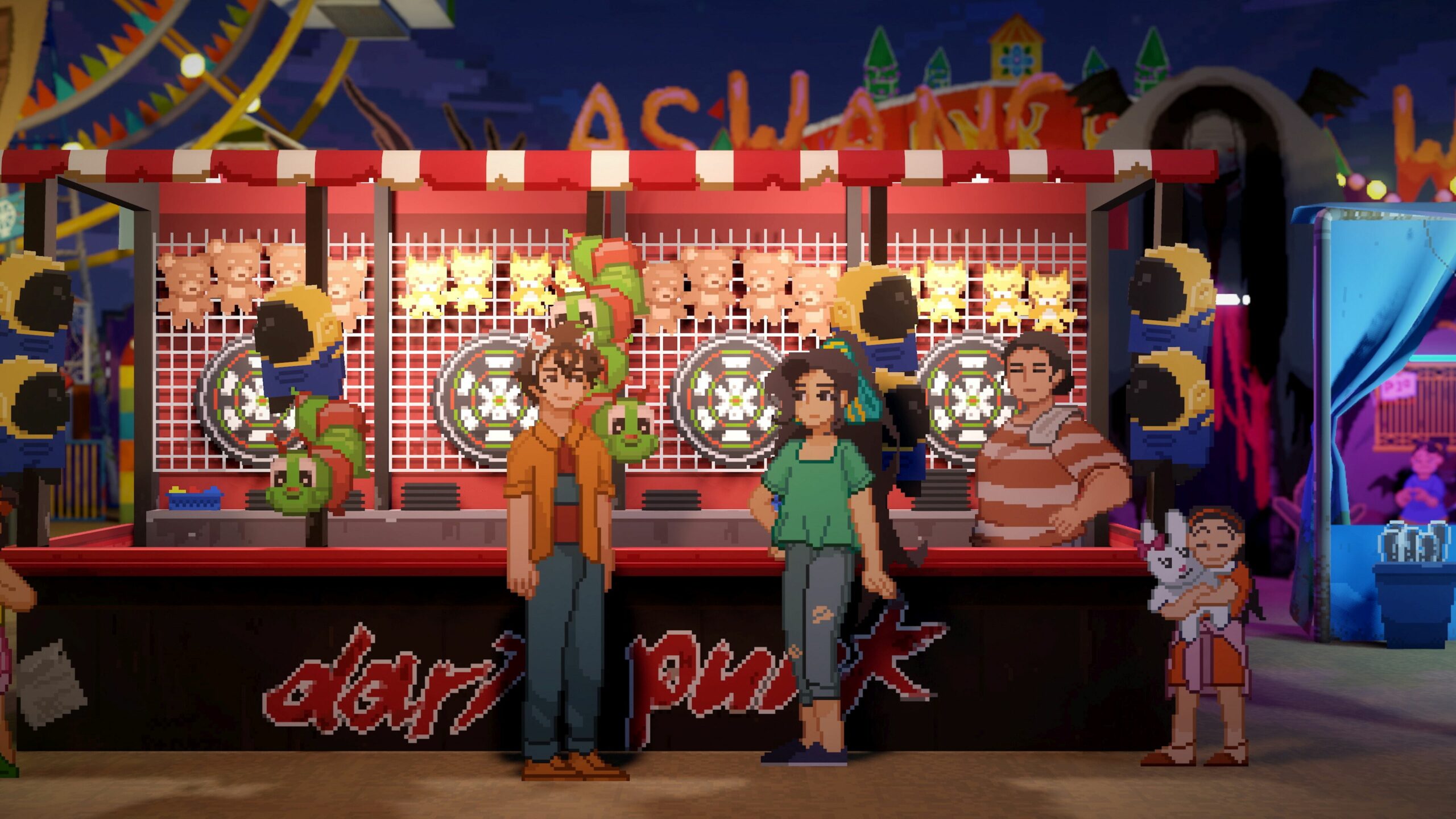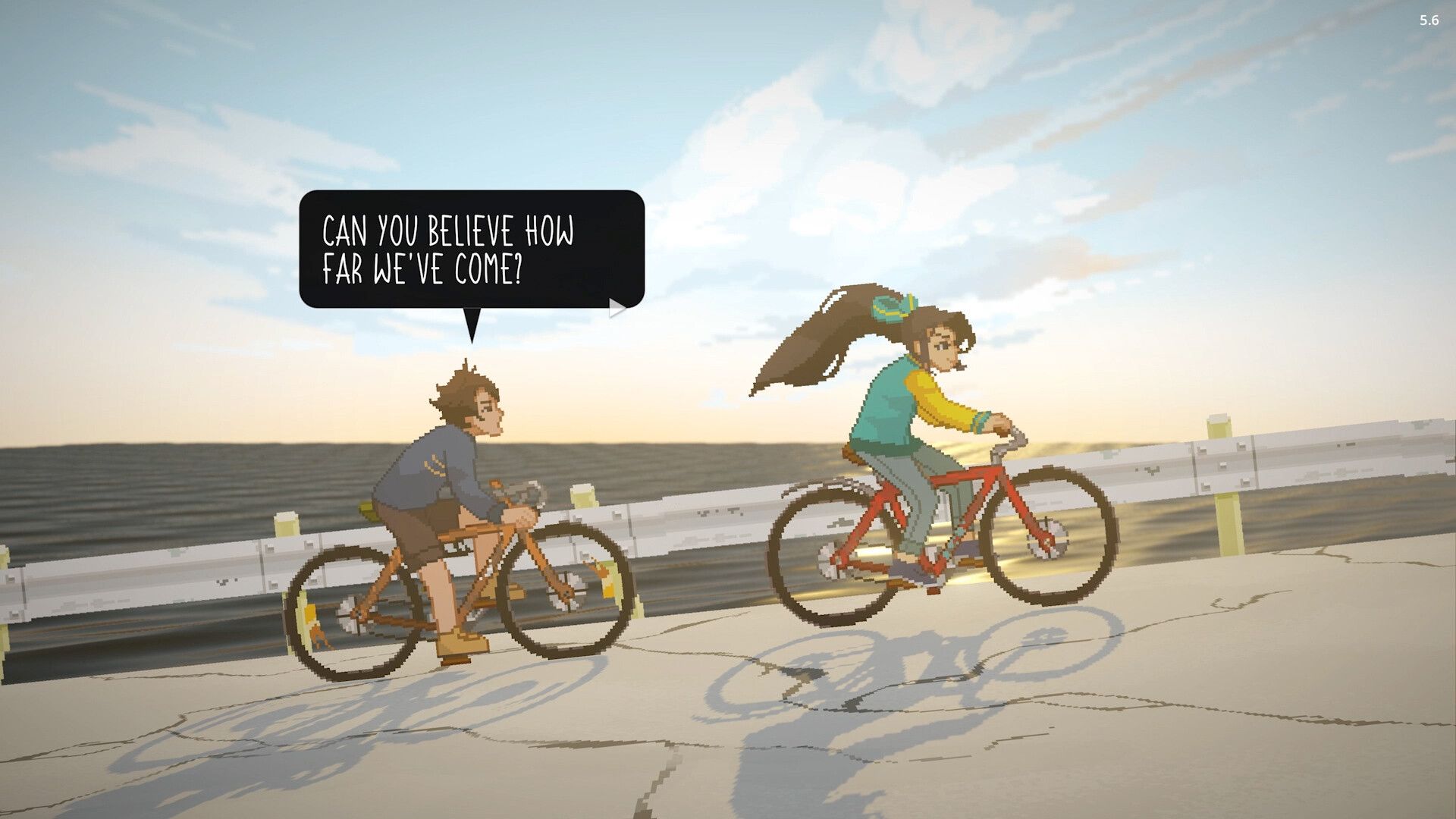Until Then Review
Although I’m several decades out of my teens, I can remember at least a little of what it was like. While the slang and tech have changed, navigating the treacherous waters of interpersonal relationships is still fraught with confusion and heartache. Joy, sorrow, and dashed hopes exchange places moment by moment. Then there’s the whole matter of finding meaning and direction. That formative and perplexing time forms the backdrop for Until Then, an interactive visual novel. But there are bigger themes and deeper mysteries than who is dating whom, and I’ll do my best not to spoil them.
B-Ball, Book Reports, and Crushes
Set in a fictionalized version of the present-day Philippines, Until Then’s main protagonist is Mark, a high school kid with more talent than ambition. Mark is the kind of kid who puts off school work until the last minute, risking the failure of his group’s presentation and the ire of Louise, a brainy, high-achieving classmate on whom he has a crush. Mark and Louise’s immediate friend group includes Cathy, a close friend of Mark who also has set her sights on Louise. In one series of scenes, we meet Louise’s secret best friend, the impetuous Sophia. We also learn that Louise has a secret boyfriend, an older student, and a budding rock star. For a moment, everyone’s romantic longings are dashed.
That all sounds pretty banal. Honestly, it takes some time for Until Then to pick up a little steam. However, by the end of the game’s first chapter, I was solidly invested in the characters. It was around this time that there were hints that things were not quite right. One character’s memories didn’t square with others, that kind of thing. As the narrative mysteries evolved, so did the characters, backgrounds, and their relationships.

Obviously, teens can be cruel, heartless, and unsympathetic. By and large, the kids at the center of Until Then are appealing, open-hearted, and aware that actions have consequences. I wish I could say more about the plot, but surprise and discovery are at the heart of the game. For a title in this genre, Until Then is a substantial game, clocking in at well over a dozen hours.
Point-and-Text Adventure
As engaging as its characters and story are, Until Then also plays with the visual novel format in a memorable way. A great deal of the dialogue is presented through real-time text chats that feel authentic and contemporary. While the text exchanges contain all the slang, erasures, and edits we’re used to, the teens in Until Then are considerably more literate, witty, and grammatically correct than their real-life counterparts. I suspect the Philippine education system might be to thank. As an aside, the game allows the player to “input” the pre-written texts in a way that’s a bit more immersive. Like any dialogue-based game, there are choices to be made, though I’m not sure how they impact the overall narrative.

Aside from the texts, the story is mostly delivered through unvoiced dialogue, which means over a dozen hours of reading. Recognizing this can end up feeling repetitive, Until Then takes the format of a 2.5D action game, action being a very relative term for walking from place to place. There are also some simple mini-games, like a timed slider game to pick up fish balls from a street food cart. From buying a subway ticket to waking Mark with his alarm clock, these mundane tasks help bring the player into the character’s world. This becomes important later when the story begins to develop in more surprising ways. Still, don’t expect a lot of rewarding platforming or combat. Until Then is a visual novel, after all. For the player with a lot of time, there are a ton of optional interactions with NPCs and the environment.
Move It Along
I have a couple of minor gripes about Until Then’s narrative mechanics. First, the game is too long by a couple of hours. I think this excess mostly comes from dialogue and texts that simply drag on a bit past their points of interest. There were a few times in the opening hours when I really wanted to move the story along. But then a new character or story development hooked me back in.
Until Then has a retro, pixel art style that’s colorful and inviting. It took me a while to warm up to it, to be honest. I’m just a little tired of the aesthetic. However, the art is much more expressive and sophisticated than I originally gave it credit for, and the use of depth and detail kept the visuals interesting. There’s just enough visual information to portray emotion, and in this case, the reference to games fits the story naturally. The cities and countryside of the Philippines form a visually and culturally unique backdrop that integrates into the story without ever feeling artificial.

Sound On
Any game without spoken dialogue depends that much more on sound design and music. Mark is a budding — if inconsistent — pianist, and his attitudes towards practice and music reflect larger emotional moments. Both Until Then’s musical score and diegetic music are well done and varied with the shifting moods of the story. The sounds of the environment, city noises, and nature are carefully crafted.
My feelings about Until Then evolved the longer I played. What at first seemed like a slow-paced visual novel with retro graphics gradually began to reveal itself as something much more sophisticated. Excellent character development and a surprising, emotionally varied narrative are at the heart of Until Then, but its storytelling mechanics are fresh and contemporary, too. Mark and his gang have interesting stories to tell, and so does Until Then.
***PC code provided by the publisher for review***
The Good
- Engaging characters and dialogue
- Interesting narrative mechanics
- Expressive pixel art
The Bad
- Some slow pacing
- Might be too long

